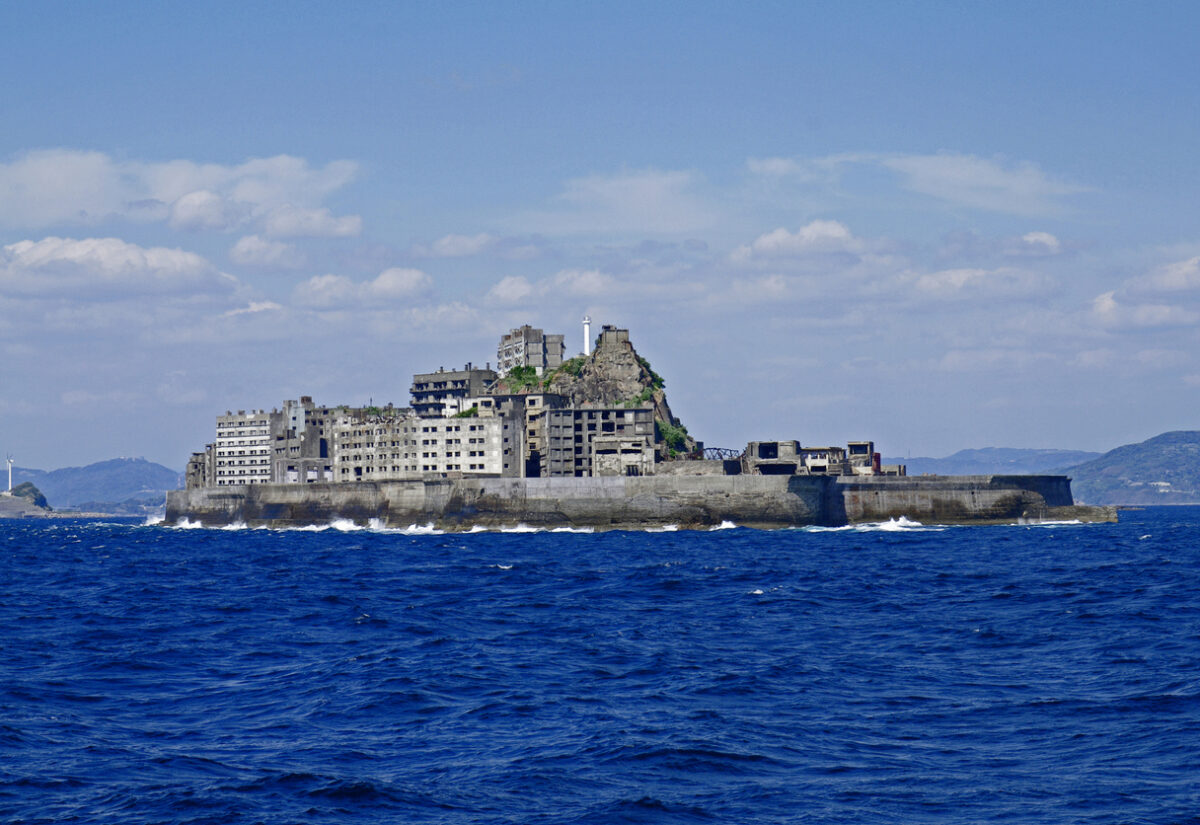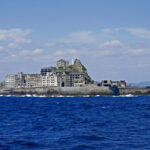 Getty Images/iStockphoto
Getty Images/iStockphotoThroughout history, entire cities have flourished, only to be consumed by the very natural forces they once stood against. Whether buried by sand, swallowed by the jungle, or overtaken by rising waters, these places serve as haunting reminders that nature always has the final say. These lost cities are not just about ruins; they are about human ambition, environmental vulnerability, and the astonishing speed at which the natural world can reclaim what civilisation leaves behind. Here are 10 remarkable cities from around the world that were dramatically reclaimed by nature, with each one offering a unique glimpse into our fragile relationship with the environment.
1. Petra, Jordan
Once a bustling trade hub and capital of the Nabataean Empire, Petra was carved into red sandstone cliffs around the 4th century BCE. Known for its rock-cut architecture and advanced water management system, the city became a crossroads of commerce, linking Arabia, Egypt, and the Mediterranean. But after centuries of prosperity, a combination of shifting trade routes and devastating earthquakes led to its decline.
Over time, sand and stone buried much of Petra’s grandeur. The narrow canyon entrance, the Siq, became clogged with debris, further concealing it from the outside world. Rediscovered by Swiss explorer Johann Ludwig Burckhardt in 1812, Petra remains one of the most iconic archaeological sites on Earth, with the desert constantly threatening to reclaim its carved tombs and temples once again. Its dramatic beauty earned it a place as one of the New Seven Wonders of the World.
2. Angkor, Cambodia
At its peak in the 12th century, Angkor was the heart of the Khmer Empire, home to over a million people and dotted with hundreds of intricately carved temples, canals, and reservoirs. Angkor Wat, the most famous structure, remains one of the largest religious monuments ever constructed. However, as the empire declined, possibly due to ecological strain, war, and overextension, nature began to reclaim the city.
The surrounding jungle consumed roads, reservoirs silted up, and trees burst through ancient stone walls. By the time Western explorers stumbled upon the ruins in the 19th century, many parts were almost entirely hidden beneath foliage. Despite restoration efforts, temples like Ta Prohm have been left partly entwined with tree roots to illustrate just how deeply nature penetrated the site.
3. Pripyat, Ukraine
Founded in 1970 to house the workers of the Chernobyl Nuclear Power Plant, Pripyat was a model Soviet city with apartment blocks, schools, shops, and even an amusement park. On 26 April 1986, a catastrophic reactor explosion turned Pripyat into a ghost town. Its 50,000 residents were evacuated within days, leaving behind a fully intact but contaminated city.
Since then, nature has slowly overtaken the abandoned structures. Buildings are overgrown with moss and vines, trees sprout through floors, and wild animals, including wolves and lynx, have reclaimed the streets. While radiation lingers, the so-called “Chernobyl Exclusion Zone” is now an unintended nature reserve, a surreal example of how life finds a way in the wake of disaster.
4. Herculaneum, Italy
Overshadowed by Pompeii but arguably better preserved, Herculaneum was a Roman resort town destroyed by the eruption of Mount Vesuvius in 79 CE. Unlike Pompeii, which was buried in ash, Herculaneum was entombed in a thick blanket of volcanic mud and pyroclastic material that solidified and preserved organic materials like wooden furniture, food, and even papyrus scrolls.
For over 1,600 years, the town lay hidden beneath metres of hardened earth. Excavations in the 18th century revealed entire homes with frescoes and mosaics still in place. Much of it remains unexcavated, protected beneath modern Ercolano. Nature’s violent reclaiming of the town ironically helped preserve it, making Herculaneum a time capsule of Roman daily life.
5. Machu Picchu, Peru
Perched nearly 2,500 metres above sea level in the Andes, Machu Picchu was built by the Inca around the mid-15th century and likely served as a royal estate or religious retreat. After the Spanish conquest, it was abandoned and forgotten by outsiders. For centuries, it lay hidden beneath dense cloud forest, its stone terraces and temples wrapped in vegetation.
When Hiram Bingham brought it to international attention in 1911, much of Machu Picchu was overgrown. While it’s since been cleared and stabilised, the encroaching forest remains a constant threat. Its remote location helped preserve it, and the site continues to illustrate the delicate balance between civilisation and the wild.
6. Great Zimbabwe, Zimbabwe
A powerful city built entirely from stone without mortar, Great Zimbabwe was the capital of a medieval African kingdom that controlled trade routes stretching to the Indian Ocean. At its height, between the 11th and 15th centuries, it may have supported over 20,000 people.
As the city declined, possibly due to overpopulation, resource depletion, or political upheaval, it was gradually abandoned. Over the following centuries, trees and grasslands crept back in, obscuring the once-bustling centre. Despite colonial efforts to deny African authorship, archaeological evidence confirms its indigenous origins. Today, it stands as a powerful symbol of precolonial African engineering and resilience.
7. Cahokia, USA
Cahokia Mounds, near present-day St. Louis, was once the largest city north of Mexico. Built by the Mississippian culture around 1050 CE, it featured vast earthworks, temples, and plazas, and possibly housed over 20,000 people. Yet by the 14th century, it had been abandoned for reasons still debated—climate change, flooding, or political conflict.
Once swallowed by forest and farmland, Cahokia’s mounds are now protected as a UNESCO World Heritage Site. But many surrounding settlements remain buried beneath suburbia. The city’s disappearance and slow absorption by the land remains one of North America’s greatest archaeological mysteries.
8. Vijayanagara, India
The capital of a prosperous Hindu empire, Vijayanagara was among the world’s most populous cities in the 1500s. Its architecture blended temple complexes with civil buildings, irrigation systems, and marketplaces. But after a devastating defeat at the Battle of Talikota in 1565, the city was looted and left to crumble.
Over the next centuries, the ruins near modern-day Hampi were overtaken by wilderness. Trees sprouted through collapsed structures, grass overtook pathways, and animals made homes in former palaces. Today, visitors walk through a haunting mix of history and natural reclamation, with only fragments of its former grandeur standing tall.
9. Hashima Island, Japan
A remote island turned industrial powerhouse, Hashima (also known as Gunkanjima or “Battleship Island”) became a symbol of Japan’s rapid modernisation in the early 20th century. Its coal mine sustained thousands of workers crammed into high-rise blocks. When petroleum replaced coal in the 1970s, the island was abruptly evacuated.
In the years since, ocean winds, typhoons, and salt spray have accelerated decay. Metal rusts, concrete cracks, and ivy climbs every surface. Despite its dystopian appearance, Hashima now draws photographers and film crews, including as a setting in the James Bond film Skyfall, highlighting its post-apocalyptic allure.
10. Chan Chan, Peru
Built by the Chimu civilisation before the rise of the Inca, Chan Chan was a sprawling adobe metropolis with vast ceremonial plazas and intricately carved walls. Situated in the arid coastal region near Trujillo, it was susceptible to El Niño rains and erosion.
After its conquest by the Inca in the late 15th century, the city declined. Without upkeep, adobe walls began to melt away with each rainy season. Sand drifts now cover parts of the site, and the constant threat of weathering remains a challenge for conservation. Still, the delicate artistry of Chan Chan endures, its walls bearing witness to both human achievement and environmental fragility.
Each of these cities tells a story of ambition, ingenuity, and ultimately, surrender to the elements. While we often celebrate them as triumphs of human civilisation, they are just as much cautionary tales. Time, weather, and wilderness remain the true architects of the Earth, always ready to reclaim what humanity has built.



